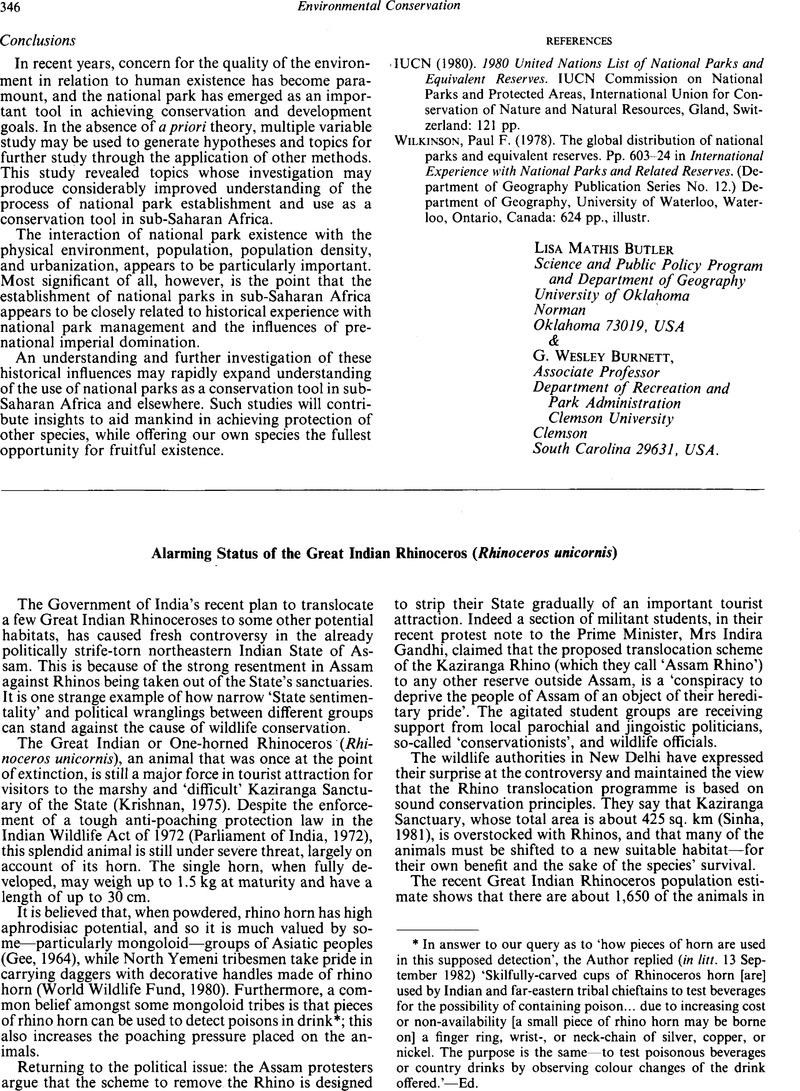No CrossRef data available.
Article contents
Alarming Status of the Great Indian Rhinoceros (Rhinoceros unicornis)
Published online by Cambridge University Press: 24 August 2009
Abstract
An abstract is not available for this content so a preview has been provided. Please use the Get access link above for information on how to access this content.

- Type
- Short Communications & Reports
- Information
- Copyright
- Copyright © Foundation for Environmental Conservation 1982
References
REFERENCES
Baidya, K.N. (1981). Tiger conservation, its objectives, management strategies, and achievments. Cheetal (Dehra Dun, India), 22 (1 & 2), pp. 21–32.Google Scholar
Gee, E.P. (1964). The Wildlife of India. William Collins & Sons, London, England, UK: 192 pp., illustr.Google Scholar
Krishnan, M. (1975). India's Wildlife in 1959–70. Bombay Publishing House, Bombay, India: iv + 179 pp., illustr.Google Scholar
Parliament of India (1972). Indian Wildlife Act of 1972. Government of India Publication, New Delhi, India: 27 pp.Google Scholar
Project Tiger (1981). Annual Report of 1981. Ministry of Agriculture, New Delhi, India: 35 pp.Google Scholar
Sinha, M.K. (1981). Elephant migration in Kaziranga. Tiger Paper, 8(1), [FAC/UNEP, Regional Office, Bangkok, Thailand], pp. 16–8, fig.Google Scholar
Tiwari, K.K. (1981). Rare and Endangered Animals of India. Zoological Survey of India, Calcutta, India: iv + 82 pp.Google Scholar
World Wildlife Fund (1980). Run rhino, run—extinction is forever. Scientific American, 243(3), pp. 10–1, fig.Google Scholar


